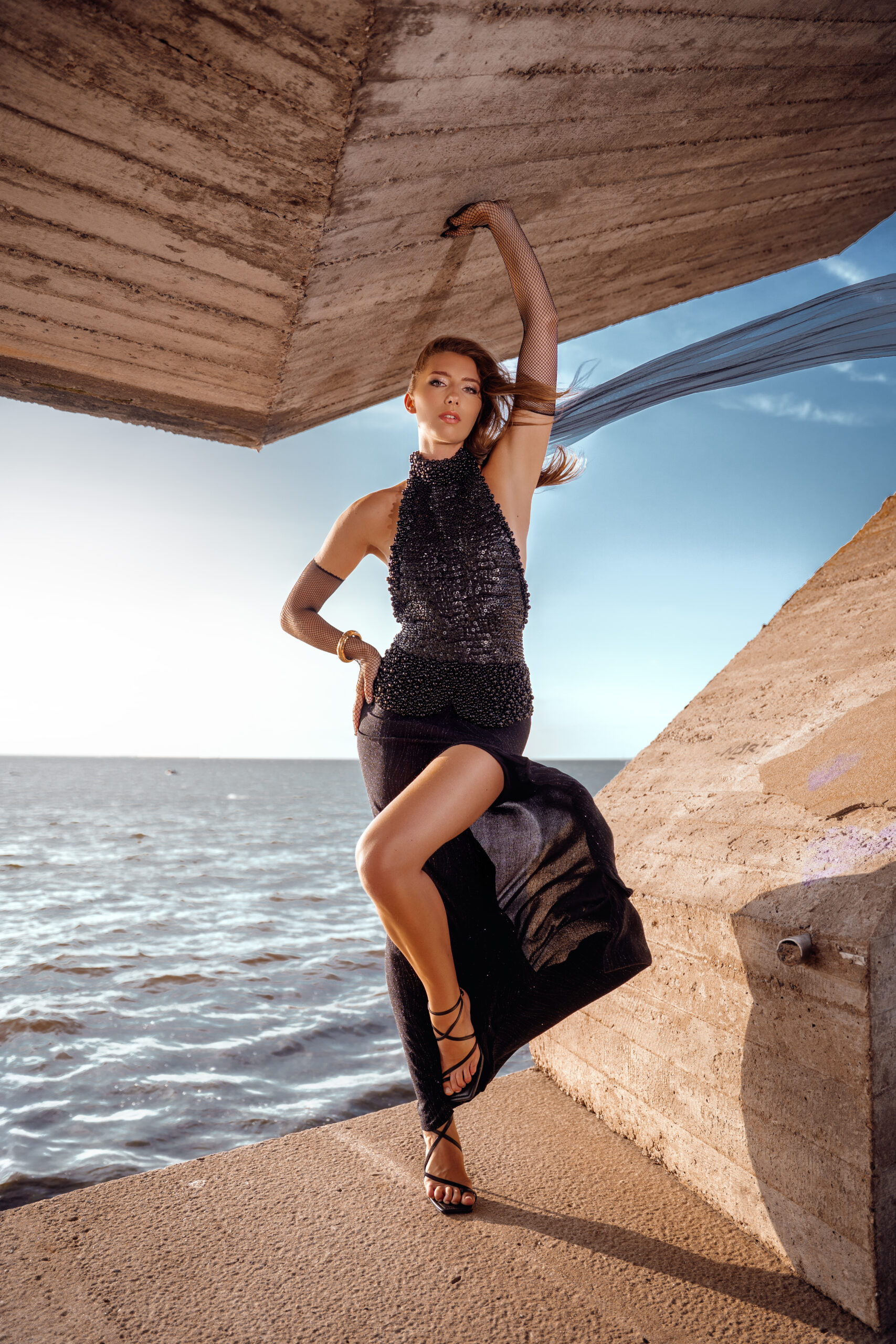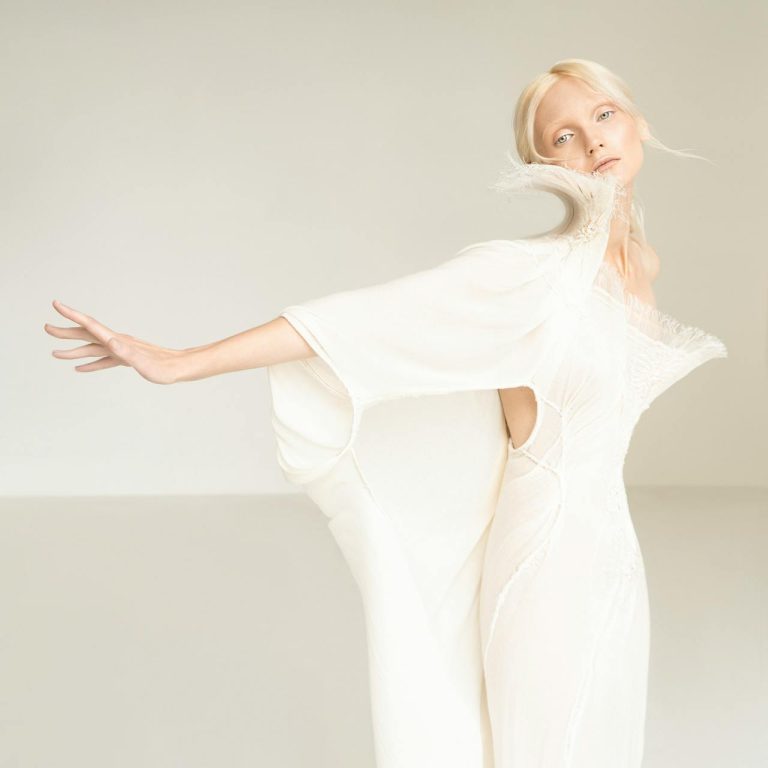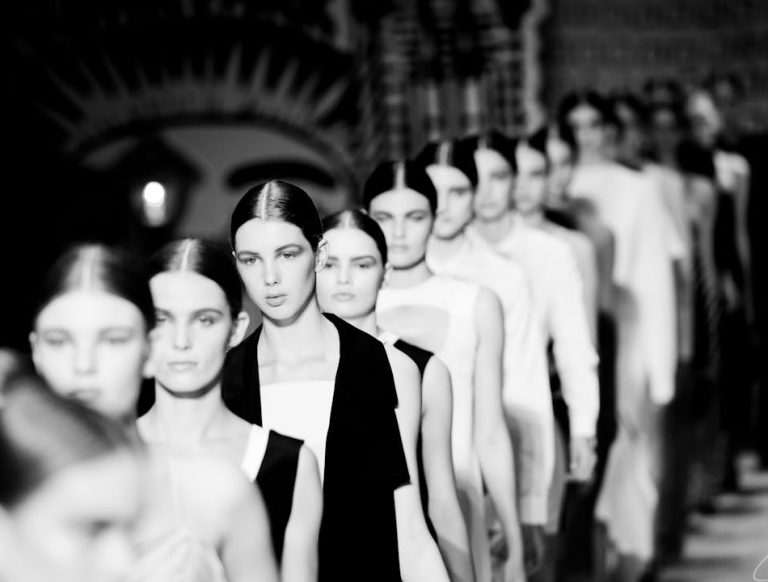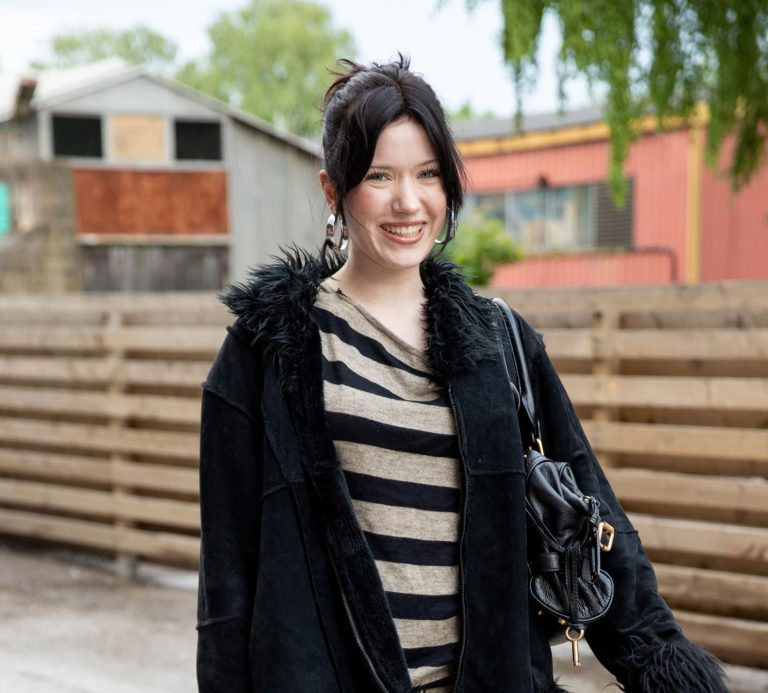In spring 2024, I was fortunate enough to go behind the scenes at Tallinn Fashion Week. For one day, I became an assistant to Siret Esko—a master of bead embroidery—who was presenting her new “Golden Hour” collection. Back then, I was just starting my journey in the fashion world and didn’t yet know which direction I wanted to pursue.
From the very first minute of our acquaintance, Siret surprised me with her sincerity and openness—rare qualities in the sometimes arrogant fashion industry. Her path began in 2000 with creating clothing for dances, and in 2016, the Siret Design brand was born. Siret’s clothing combines elegant timeless silhouettes with hand embroidery using the finest materials.
In September 2025, on the eve of a busy fashion month, we met again. Now, I was in the role of a journalist and Siret was still preparing her new collection—she plans to show it very soon, on October 23, at Tallinn Fashion Week.
In an exclusive interview for the Haute Mood portal, Siret Esko shared about her upcoming “1001 Nights” collection, the story of its creation, and which piece from the collection became her favorite. As in every one of my interviews, there was no shortage of a special question that I ask all guests.

“1001 Nights” collection by Siret Design
Photo by Viktoria Kivimägi
The name of the collection “1001 Nights” hints at inspiration from the Middle East and Arabian fairy tales. What prompted you to choose this theme? Was there a key moment or source of inspiration?
The creation of the “1001 Nights” collection did not arise from a single specific moment, but rather from the interplay of various impressions and feelings. One source of inspiration was a meeting with a client from Dubai, which directed my attention to Middle Eastern aesthetics. However, the main inspiration came from an inner desire to create something magical, sparkling, and refined. The enchanting atmosphere of Arabian fairy tales, rich imagery, and sense of luxury have always captivated me. I was particularly inspired by the lifestyle of Arab women—their elegant dignity, inner strength, spirituality, and serenity. These qualities, rather than their clothing per se, formed the foundation for my collection, to express beauty and depth.
Did you have a muse for this collection? What kind of woman do you envision wearing these pieces?
I did indeed have a muse, although this idea crystallized only later. While searching for inspiration, I started googling the Qatari royal family and their photos. I was particularly struck by the image of a sheikha, who exuded extraordinary dignity. This image became the foundation for creating the collection, although I wasn’t consciously thinking about it at first. My vision was to create clothing for a woman who carries the same elegance and inner strength within her.
When did you start working on the “1001 Nights” collection? How much time typically went into creating the embroidery for a single piece?
The creation of the collection began about a year ago, in August, when I felt a clear attraction to this theme and decided it would be my next project. The process started with gathering ideas and reflecting—what silhouettes, colors, and materials could characterize the collection. In September, I began searching for fabrics and materials, including embellishments with beads and sequins, which I mostly ordered from the USA and the United Kingdom. Sourcing materials is a complex and time-consuming process, as finding high-quality producers of beads and sequins is becoming increasingly difficult. Nevertheless, it is precisely the materials that determine which ideas come to life, since my work largely depends on what I manage to obtain.
I always start with the most complex items, such as luxurious dresses, which take weeks to make. For example, the first long white dress, adorned with beads and inspired by a snakeskin pattern, was completed in November. I often work on other projects in parallel, such as items for the summer collection, but “1001 Nights” remained the main focus. Embroidery for one item takes an average of four to five days, but for more intricate dresses with lots of embroidery, it can take up to two weeks. Altogether, the embroidery takes at least six months, plus material sourcing and other preparatory work.
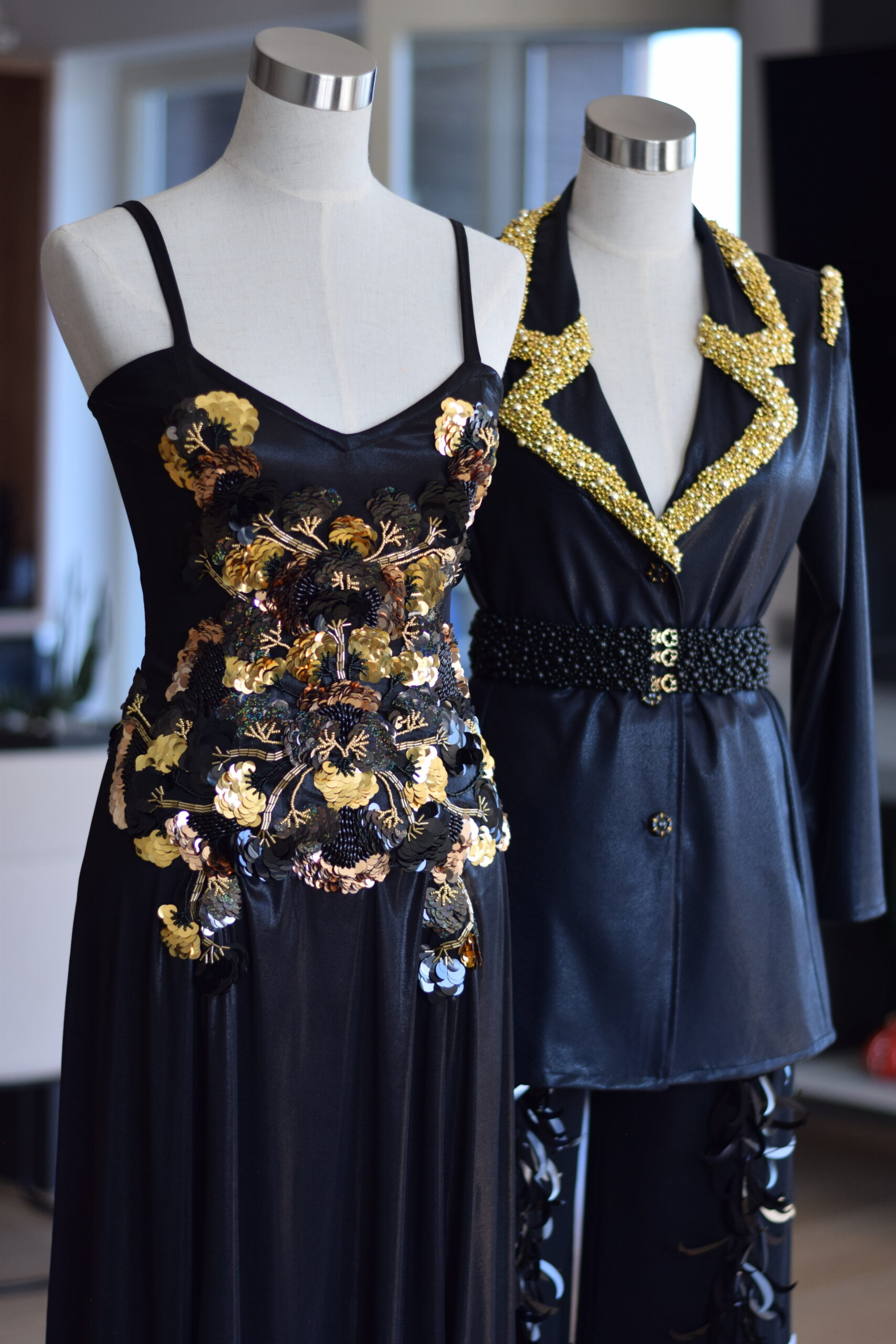
Does the embroidery in this collection differ from your previous works? Were there any new techniques, materials, or was the process more complex than usual?
The embroidery in the “1001 Nights” collection highlights new techniques, some of which I had only experimented with once or twice before, but this time I developed them further. The Arabian theme inspired me to create textures that reflect the atmosphere of this culture—dignified, pure, and elegant. Arabian design often features plant and floral motifs, but they are not lifelike; rather, they are stylized and ornamental. I decided to follow this approach, creating graphic patterns that repeat and form rich textures. Although I had used similar techniques in the past, I adapted them this time to fit the collection’s fairy-tale and luxurious vibe. The embroideries are voluminous and time-intensive, but it is precisely this detail and dedication that give the collection its special sparkle, bringing out the spirit of an Arabian fairy tale.
Is there a piece in the new collection that you particularly love? Tell us why it stands out for you.
My favorite piece in the collection is probably the sleeveless black dress with an open back and high neckline [featured image]. The neckline and hip area are adorned with beads, the torso is covered with matte vinyl sequins that create a striking and luxurious look, and the dress is complemented by a transparent cape. This dress is especially close to my heart because I also created a white bridal look based on it, which is almost identical but feels uniquely special. Both dresses—the black and the white—are powerful and expressive, embodying the essence of the collection. Additionally, I really love the long white maxi coats, which are also gems of the collection. These coats are designed so that every woman wearing them feels confident and elegant, like a true star.
How do you see your pieces from the “1001 Nights” collection being worn in real life? Are they for special occasions, everyday wear, or something versatile?
The collection is designed to cover a wide spectrum of wearing possibilities, ranging from festive events to everyday wardrobe. Some items, such as dresses with striking designs, are perfect for grand occasions like the Cannes Film Festival or red carpet events—they are true eye-catchers. At the same time, the collection includes more practical pieces, such as mini dresses, cigarette pants, jackets, and blouses, which are easy to combine with everyday clothing, for example with a skirt or a blazer.
These items are created to elevate everyday style to a new level, adding elegance and refinement. Although many garments are handmade and detail-rich, they are still versatile enough for daily wear. For instance, collared blouses and light jackets are very popular because they easily fit into an existing wardrobe. Additionally, the collection features four maxi coats, including one furry one, which add luxury and practicality.

“1001 Nights” collection by Siret Design
Photo by Viktoria Kivimägi
How soon will it be possible to purchase items from the collection after the show? Are the pieces available immediately, or do we need to wait for them to appear on the website?
The items become available almost immediately after the presentation. I usually prepare the online store a couple of days before the show, uploading all the garments so they are ready for purchase. If an item sells out quickly or a client wants a different size, I can make a similar product to order if I find suitable materials, such as the same beads or sequins. If needed, I’m ready to make small adjustments to meet the client’s wishes, but the clothing mostly stays true to the original design.
Haute Mood Special: Imagine you’ve been invited to the front row of a fashion show by one brand. Which brand would it be and why?
If I had to choose, it would definitely be Fendi. This brand has always been close to my heart, ever since the Karl Lagerfeld era. Fendi’s aesthetics resonate deeply with me—it’s like a reflection of my own design language. Their collections harmoniously combine everyday clothing, such as cigarette pants, and luxurious pieces like maxi coats and evening dresses. Fendi’s color palette and clothing design, which unites elegance and practicality, is exactly what inspires me. Every time I travel, I visit Fendi stores to view their collections—not just accessories, but precisely the clothing that carries that special feeling. Fendi is the brand that resonates most with my creative vision.
The original interview in Estonian was translated into English with maximum accuracy, preserving the meaning and style of the original.
